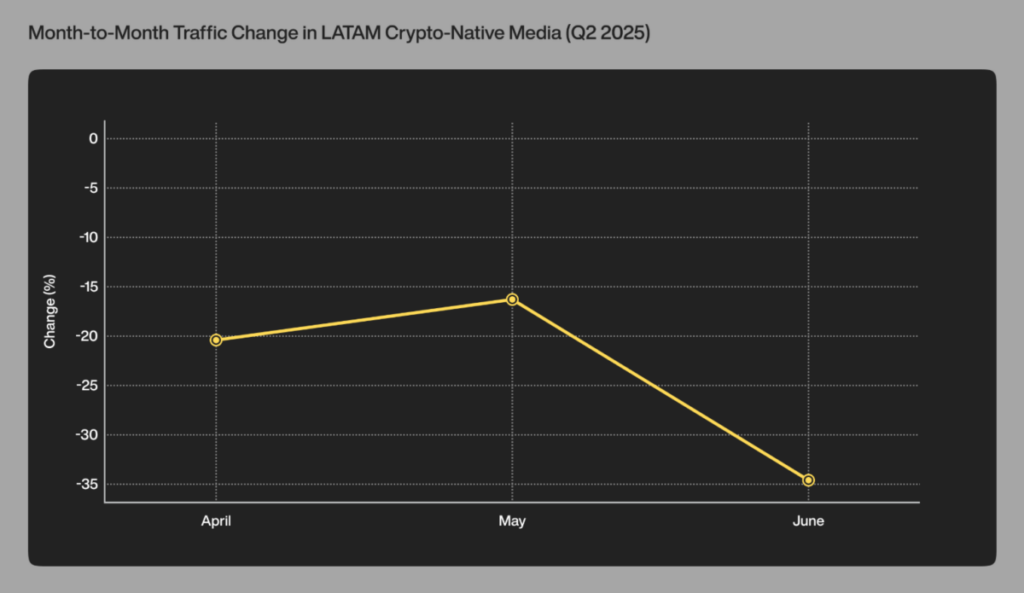Crypto-Native Traffic In LATAM Plunged 54% QoQ While Mainstream Added 20M Visits
When we at Outset PR started digging into the numbers for Latin America’s crypto media in Q2, the first thing that struck us was how split the picture looked.
In Q1, crypto-native traffic was already showing cracks. Volumes in Latin America fell by 23% in just three months. That was already setting off alarm bells for us because adoption across the region was moving in the opposite direction, growing steadily.
Then came Q2, and things went from bad to brutal. We found crypto-native visits collapsed from 17.85 million in Q1 to just 8.19 million in Q2 across the region. That’s a 54% plunge quarter-on-quarter – the steepest downturn we’ve tracked since we started doing these reports. If you zoom in month by month, you see the slide accelerating: 3.35M in April, 2.65M in May, and only 2.19M in June.

LATAM crypto-native media went from struggling in April to hitting a deeper slump by June 2025
Generalist outlets (finance, tech, and news portals with crypto sections) weren’t exactly having a golden quarter either. About 70% of them still faced traffic declines. But the difference is scale. Even with most losing ground, the sheer size of the big players carried the category forward. Mainstream grew from 243.8 million visits in Q1 to 263.2 million in Q2, adding nearly 20 million visits overall.
While crypto-native outlets saw only a small improvement, broader media in LATAM held steady
So when you line the two side by side, the contrast becomes sharp: the specialists are bleeding audience, the generalists are managing to grow, and the balance of crypto visibility is shifting toward broader media.
We track media dynamics worldwide because traffic is a signal of where people are actually consuming crypto information. If crypto-native sites are losing half their audience in a single quarter, that means two things: first, their ability to influence narratives is shrinking fast; and second, the broader story of crypto adoption in Latin America is increasingly being filtered through mainstream lenses rather than community-driven media.
And that’s where the paradox gets sharper.






